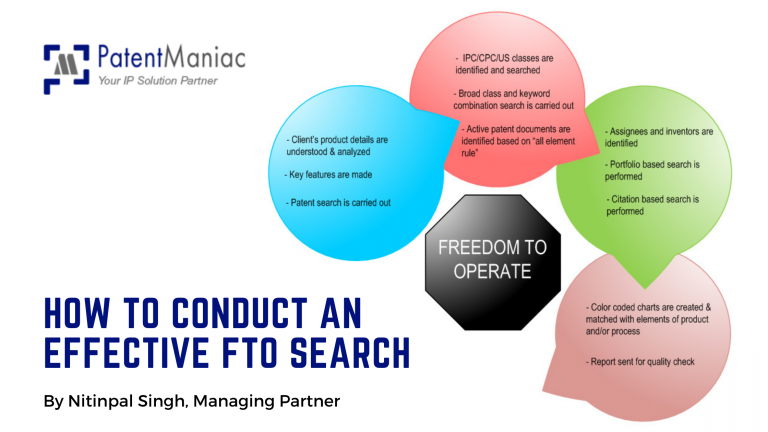How to conduct an effective FTO Search
A Freedom-to-Operate (FTO) search is performed to understand enforceable patents that can become a cause of patent infringement while launching a product or a service in a jurisdiction.
From an effective launch standpoint, it is one of the crucial steps to evaluate and judge if the product developed has already been covered by a patent active in the country where the product is to be launched. Specifically, the features associated with the product are generally checked if they are covered in the claims of enforceable patents.
In order to perform an effective FTO search, people should understand core features around the product and perform the search accordingly. From an IP perspective, the claims are reviewed and the degree of overlap with respect to core features of the product is evaluated. Once the search is performed and the closest enforceable patents are identified, a one-to-one comparison of core features is done to finalize the risk analysis. The risk majorly is classified into below aspects:
- Changing / Adding core features within the product without increasing costing of the overall product.
- Licensing with companies owing the patent covering the core features of the product.
It has to be understood that a comprehensive FTO search shall be conducted to uncover any potential enforceable patent that can also be considered while developing around the product to make is complex and less infringing. This strategy is generally used in different technologies to plan and extend features in the product.
From a product development perspective, both products and services are considered equal in terms of conducting an FTO search. To put it simpler, any service (including SAAS) is equally susceptible to patent infringement while launching in one or more jurisdiction. It is a common perception that the FTO search is product driven. However, this perception is NOT completely true.
Sometimes, both product and service provided by the product are launched together. In these circumstances, one needs to understand the nature of FTO that needs to be checked. For example, if someone is launching a Baby Doll with an AI-based technology to understand and respond to a kid’s enquiry, one should consider the AI-based technology being part of the core feature to be considered for the FTO search rather than the design of the baby doll.
Hence, one needs to be well aware of the core features in the product or service that is to be checked via an FTO search to avoid infringement.
Quick pointers for an effective FTO search will be:
- Classifying core features of the product to be launched.
- Conducting patent search within 20 years from the date of filing in the jurisdiction where the product is to be launched.
- Conducting the broadest level search on “Claim” section of the search tool to uncover everything around the product literature.
- Classifying the risk around the enforceable art identified in terms of product re-development or licensing.
In case of any queries, please reach PatentManiac at mail@patentmaniac.com.





